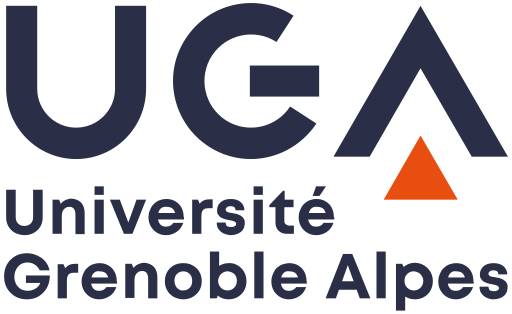On étudie la limite hydrodynamique de systèmes de particules évoluant selon une dynamique de Kawasaki dont le taux de saut est nul si la configuration ne satisfait pas à des contraintes locales particulières. Ces modéles appartiennent à la classe de modéles avec contraintes cinétiques qui ont été introduits et etudiés en physique pour modéliser la transition liquide/verre. La présence de ces contraintes entraîne l'existence de configurations gelées. En particulier, les hyperplans de configurations avec un nombre fixé de particules peuvent etre decomposés en plusieurs composantes irréductibles. Par conséquent, les méthodes usuelles de l'Entropie et de l'Entropie Relative ne peuvent être utilisées pour établir la limite hydrodynamique. On démontre dans cet article que sous une échelle diffusive la densité évolue selon une équation des milieux poreux pour des profils de densité initiaux strictement positifs et réguliers, le même résultat est démontré pour des conditions initiales plus générales pour la dynamique superposée à une dynamique d'exclusion simple symmétrique sous-diffusive.
We study the hydrodynamic limit for some conservative particle systems with degenerate rates, namely with nearest neighbor exchange rates which vanish for certain configurations. These models belong to the class of kinetically constrained lattice gases (KCLG) which have been introduced and intensively studied in physical literature as simple models for the liquid/glass transition. Due to the degeneracy of rates there exist blocked configurations which do not evolve under the dynamics and in general the hyperplanes of configurations with a fixed number of particles can be decomposed into different irreducible sets. As a consequence, both the Entropy and Relative Entropy method cannot be straightforwardly applied to prove the hydrodynamic limit of KCLG. In particular, some care should be put when proving the One and Two-block Lemmas which guarantee local convergence to equilibrium. We show that, for initial profiles smooth enough and bounded away from zero and one, the macroscopic density profile for our KCLG evolves under the diffusive time scaling according to the porous medium equation. Then we prove the same result for more general profiles for a slightly perturbed dynamics obtained by adding jumps of the Symmetric Simple Exclusion. The role of the latter is to remove the degeneracy of rates and at the same time they are properly slowed down in order not to change the macroscopic behavior. The equilibrium fluctuations and the magnitude of the spectral gap for this perturbed model are also obtained.
Mots clés : hydrodynamic limit, porous medium equation, spectral gap, degenerate rates
@article{AIHPB_2009__45_4_887_0,
author = {Gon\c{c}alves, P. and Landim, C. and Toninelli, C.},
title = {Hydrodynamic limit for a particle system with degenerate rates},
journal = {Annales de l'I.H.P. Probabilit\'es et statistiques},
pages = {887--909},
publisher = {Gauthier-Villars},
volume = {45},
number = {4},
year = {2009},
doi = {10.1214/09-AIHP210},
mrnumber = {2572156},
zbl = {1196.60163},
language = {en},
url = {http://archive.numdam.org/articles/10.1214/09-AIHP210/}
}
TY - JOUR AU - Gonçalves, P. AU - Landim, C. AU - Toninelli, C. TI - Hydrodynamic limit for a particle system with degenerate rates JO - Annales de l'I.H.P. Probabilités et statistiques PY - 2009 SP - 887 EP - 909 VL - 45 IS - 4 PB - Gauthier-Villars UR - http://archive.numdam.org/articles/10.1214/09-AIHP210/ DO - 10.1214/09-AIHP210 LA - en ID - AIHPB_2009__45_4_887_0 ER -
%0 Journal Article %A Gonçalves, P. %A Landim, C. %A Toninelli, C. %T Hydrodynamic limit for a particle system with degenerate rates %J Annales de l'I.H.P. Probabilités et statistiques %D 2009 %P 887-909 %V 45 %N 4 %I Gauthier-Villars %U http://archive.numdam.org/articles/10.1214/09-AIHP210/ %R 10.1214/09-AIHP210 %G en %F AIHPB_2009__45_4_887_0
Gonçalves, P.; Landim, C.; Toninelli, C. Hydrodynamic limit for a particle system with degenerate rates. Annales de l'I.H.P. Probabilités et statistiques, Tome 45 (2009) no. 4, pp. 887-909. doi : 10.1214/09-AIHP210. http://archive.numdam.org/articles/10.1214/09-AIHP210/
[1] and . Exclusion processes with degenerate rates: Convergence to equilibrium and tagged particle. J. Statist. Phys. 117 (2004) 549-580. | MR | Zbl
[2] , and . A microscopic mechanism for the porous medium equation. Stochastic Process. Appl. 66 (1997) 147-182. | MR | Zbl
[3] , and . Nonlinear diffusion limit for a system with nearest neighbor interactions. Comm. Math. Phys. 118 (1988) 31-59. | MR | Zbl
[4] and . Scaling Limits of Interacting Particle Systems. Springer, New York, 1999. | MR | Zbl
[5] . Diffusion of color in the simple exclusion process. Comm. Pure Apl. Math. XLV (1992) 623-679. | MR | Zbl
[6] and . Glassy dynamics of kinetically constrained models. Adv. in Phys. 52 (2003) 219-342.
[7] . Large Scale Dynamics of Interacting Particles. Texts and Monographs in Physics. Springer-Verlag, 1991. | Zbl
[8] and . Jamming percolation and glassy dynamics. J. Stat. Phys. 126 (2007) 731-763. | MR | Zbl
[9] . An introduction to the mathematical theory of the porous medium equation. In Shape Optimization and Free Boundaries 261-286. M. C. Delfour and G. Sabidussi (Eds). Kluwer, Dordrecht, 1992. | MR | Zbl
[10] . Relative entropy and hydrodynamics of Ginzburg-Landau models. Lett. Math. Phys. 22 (1991) 63-80. | MR | Zbl
Cité par Sources :








